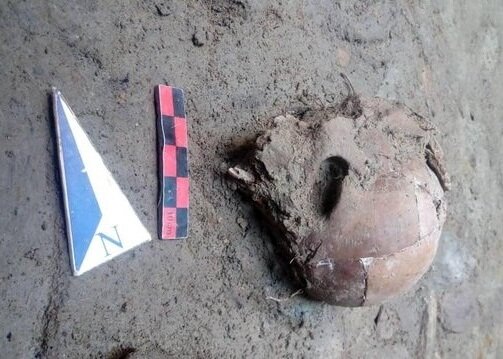Deformed skull of ancient human unearthed in Isfahan

TEHRAN – Iranian archaeologists have recently unearthed a deformed skull of an ancient human in a prehistorical mount in the central city of Isfahan.
The bizarre shape of the skull suggests it belonged to a disabled person who lived during the Parthian era, ILNA quoted Alireza Jafari-Zand who leads the archaeological survey was quoted as saying on Wednesday.
“Within one-meter distance to another skeleton, we came across a skull that has no lower jaw and is halved. The half-skull is also very strange because physically there is a state of insufficiency in the skull. We assume it belongs to a person with a disability…. We still don’t know if it belongs to a woman or a man,” Jafari-Zand explained.
Over the past weeks, a team of Iranian researchers, led by Jafari-Zand, has found a new range of discoveries that offer novel clues about the history of Isfahan. They have also found an ancient burial containing the remains of a horse -- estimated to be four years old was found near a place where a giant jar-tomb was unearthed weeks earlier.
“Tepe Ashraf is the second place after the Tepe Sialk (in Isfahan province) that has yielded the discovery of such jar tombs that offers valuable clues to uncover the obscure history of pre-Islamic Isfahan,” according to the archaeologist.
Excavations at Tepe Ashraf initially began in 2010 when Jafari-Zand announced his team found evidence at the site suggesting that the Sassanid site had also been used during the Buyid dynasty (945–1055). “We stumbled upon a reconstructed part in the ruins of the castle, which suggests that the structure had been used during the Buyid dynasty.”
The Parthian Empire (247 BC – 224 CE), also known as the Arsacid Empire, was a major Iranian political and cultural power in ancient Iran. The Parthians largely adopted the art, architecture, religious beliefs, and royal insignia of their culturally heterogeneous empire, which encompassed Persian, Hellenistic, and regional cultures. At its height, the Parthian Empire stretched from the northern reaches of the Euphrates, in what is now central-eastern Turkey, to eastern Iran.
AFM/MG
Leave a Comment